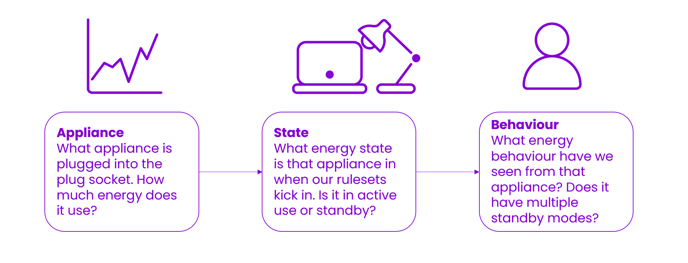Energy & Emission Savings Methodology
There are three fundamentals that allow us to accurately project energy savings when a socket is turned off:

By using this method we can project accurate, energy bill verifiable saving reports and avoid all of the common problems with baselining that invalidate savings:
-
Seasonal Variability: Heating and cooling demands fluctuate significantly with the seasons, making it hard to define a "typical" baseline period. For instance, comparing winter heating loads to a summer baseline will always overstate usage, and vice versa.
-
Occupancy Variations: Energy use is closely linked to building occupancy. If occupancy patterns change (e.g. due to hybrid working, holidays, or growth/shrinkage in staff), the baseline will no longer reflect comparable conditions.
-
Holidays and Operational Schedules: Public holidays, shutdown periods, or changes in operating hours (e.g., summer schedules) introduce non-routine events that disrupt normal consumption.
-
Appliance Use and Plug Load Changes: If appliances are added, removed, or used differently (e.g., server upgrades, changes in IT policy), this alters the load profile, invalidating baseline assumptions.
-
Weather and Building Fabric Interactions: Thermal performance changes (e.g., from window upgrades or insulation) might be masked or exaggerated depending on the weather during baseline and reporting periods.
-
Static vs. Dynamic Baselines: Using a fixed baseline (e.g., average from a specific past period) becomes increasingly outdated as conditions evolve. Increasing baselining periods decreases energy saving potential.